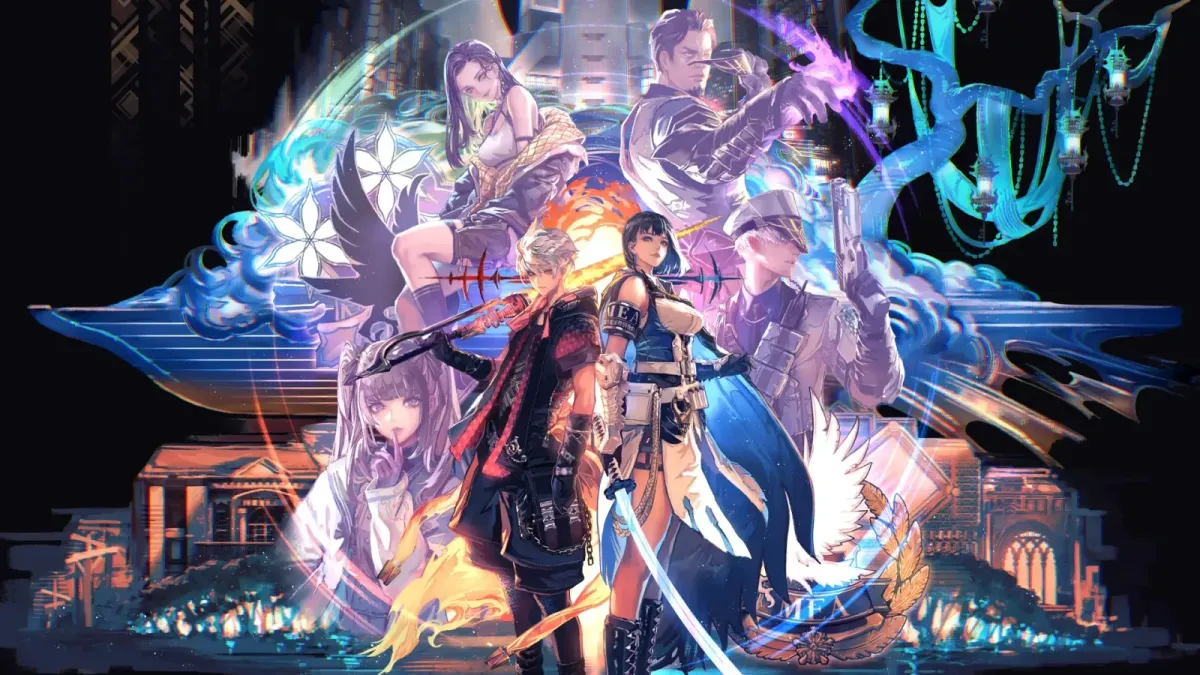
When I first laid eyes upon Furyu’s latest action RPG Reynatis, I was instantly reminded of a mix between Final Fantasy Versus XIII and Kingdom Hearts, with the game’s flashy combat and modern fantasy Tokyo setting. Poor Shibuya just can’t seem to catch a break when it comes to JRPGs!
Reynatis presents an intriguing narrative that blends modern urban fantasy with social commentary. Set in a magically-infused version of Tokyo’s Shibuya district, the story explores the struggle between freedom and order. The game follows two main protagonists on opposing sides: Marin Kirizumi, a magician seeking freedom from societal constraints, and Sari Nishijima, an officer dedicated to maintaining order by suppressing magic use. The collaboration with the The World Ends With You franchise also adds an interesting dimension and cherry on top to the narrative, potentially expanding the game’s universe in the future.
You see, the premise here is a world where magic exists but is illegal to use in public and magicians must exist by hiding. This concept allows the story to delve into issues of identity, self-expression, and the pressures of fitting into societal norms. While not close to being bad, I hesitate to call Reynatis’s narrative good either. The plot progression is pretty scattershot, the main cast is bland with even blander interparty dynamics, and there’s an absence of anything beyond the most barebones of character arcs.
Despite all of this, I still look fondly on what Kazushige Nojima strived to achieve when constructing this story. Not just in appreciation for its premise and thematic concepts, but the seamless integration of said themes in various facets of worldbuilding and gameplay. Everything coalesces into showing the nuanced consequences of how discrimination dictates the actions of both the oppressors, and the oppressed. A negative feedback loop that fuels the flames of hate crying to be extinguished. It imbues the journey with an emotional significance, elevating and grounding an average tale into something resonating.
Shibuya might be an overused location when it comes to media nowadays, but Furyu did a meticulous job recreating the iconic locations such as the 109 building or even Hachiko’s statue, except instead of Hachi it’s a crow in this game. The attention to detail in recreating real locations and the atmosphere of the district helps ground the fantastical elements of the story in a tangible, relatable world. Perhaps my favorite visual aspect in its worldbuilding are the various propaganda posters of Nishijima promoting the law enforcement sprinkled through the city. It hammers home the reaching power they have in shaping the public’s negative perception of wizards.
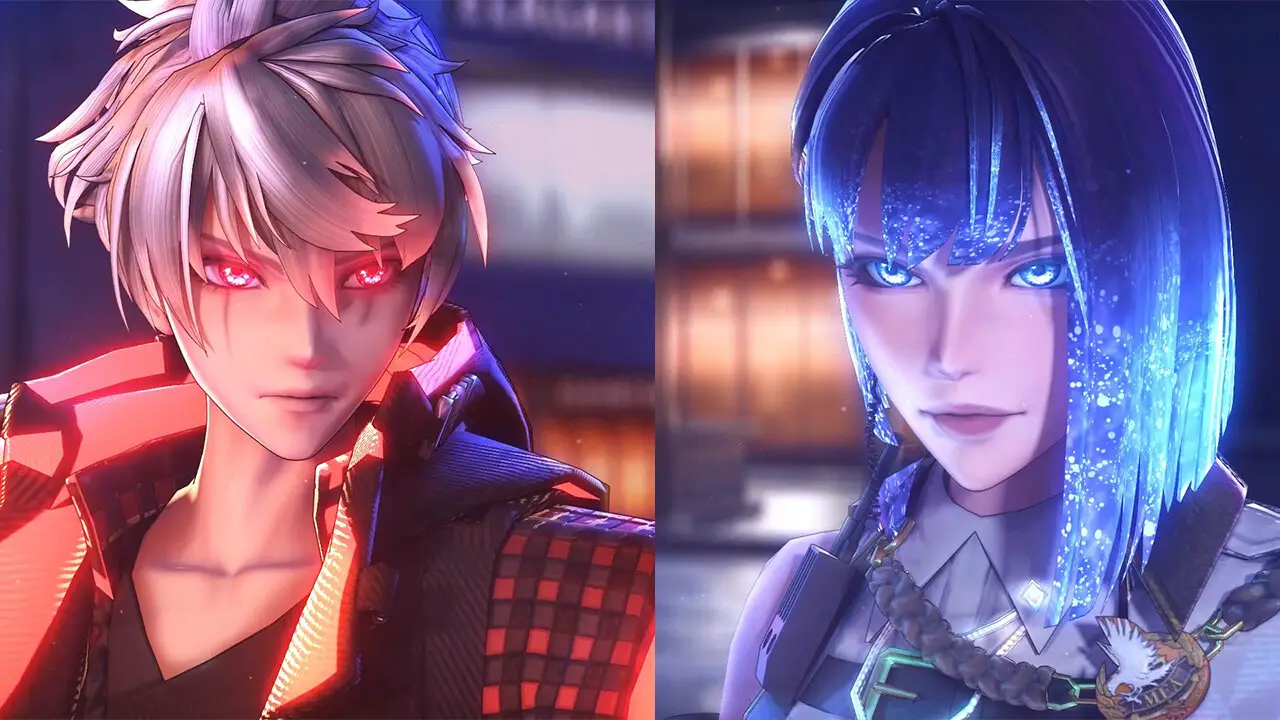
On a gameplay front, the main implementation between themes and gameplay is with the “Hoodie System”. This allows characters to switch between Suppression and Liberation states that affect the mechanics of both exploration and combat. It essentially serves as both a gameplay feature, and a metaphor for the story’s central conflict identity and self expression.
When entering Liberation mode in Shibuya, a stress meter will increase as the public reacts negatively towards the party’s presence and will contact law enforcement to hunt them down. To stop stress from accumulating, there are several hiding spots scattered through each district that shields the wizards away from the public eye. While stress builds up so slowly that I was never in danger of maxing out the meter, it is a neat and nonintrusive addition that grounds the world. To add on, combat encounters in Shibuya are primarily initiated by officers claiming that they have the right to attack and arrest any wizard on sight. Thus while there is not much to do in the city outside of the main story, this lingering atmosphere of oppression makes Reynatis’s Shibuya a memorable gameplay hub.
Speaking of combat, the battle system is the shining aspect of Reynatis, easily adding excitement to the city, and the subpar dungeons. These are located in a forest-like setting are nothing but lazy copy and pasted environments that become an absolute drag to play through. They essentially consist of linear pathways interspersed with flat, open arenas where fights occur. Once in a skirmish, the fundamentals of battle revolves around two modes characters can freely switch between during battle, Liberation and Suppression. When Liberated, the wizards can dish out standard attacks and equippable skills called Wizarts with the face buttons. The catch being anything done in this mode will deplete the magic meter at the bottom of the screen. Much like other Action RPGs, utilizing skills or basic attacks will rapidly use up magic, but a key difference is even standing still slowly drains the bar.
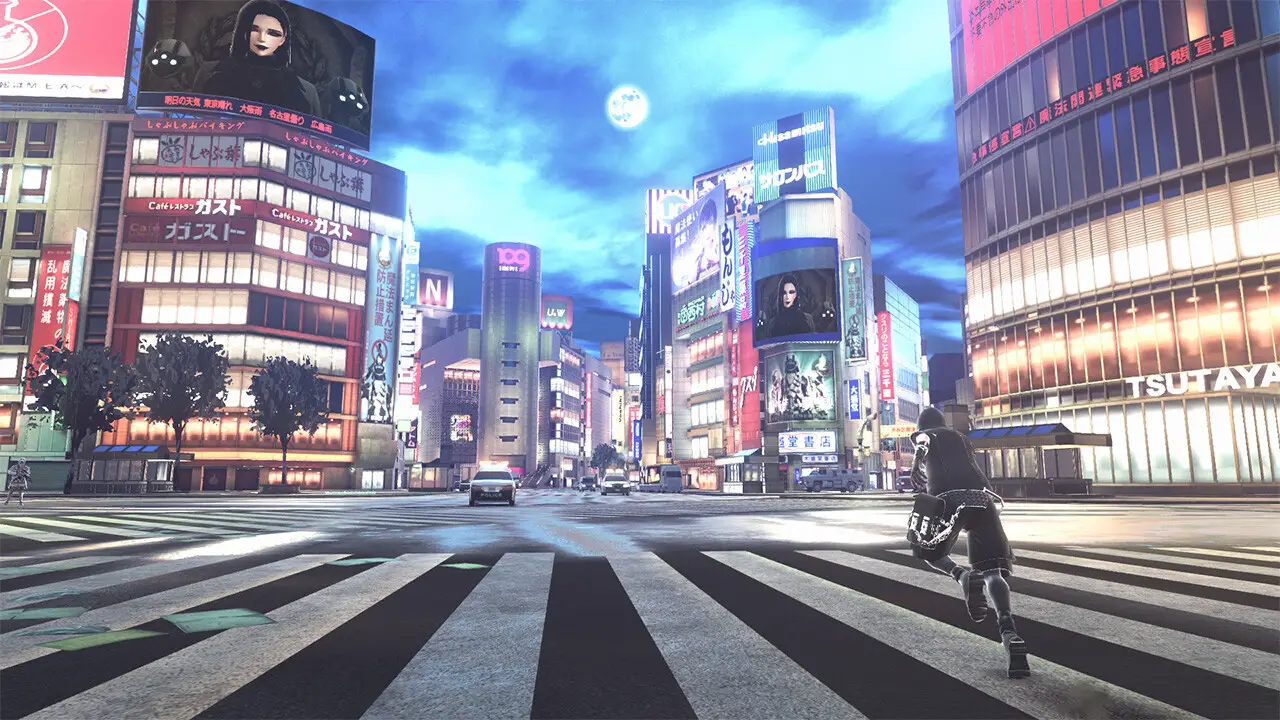
This is where Suppression mode comes in. During Suppression, the character’s magic meter will slowly recover overtime, with the trade off being unable to attack. Fortunately, various options are available that ensure the action still maintains momentum during this waiting period. Primarily with the emphasis on dodging and parrying. While players can still dodge in Liberated mode, being in Suppression automatically slows down time and displays an indicator when a ranged attack is about to make contact with the player.
Similarly, time will also automatically slow when confronted with a melee attack, this time with a giant red circle taking up the center of the screen. Holding down the dodge button will fill the outline of the circle, and letting go once a revolution has been made will initiate a parry. Both of these tactics greatly fill up the magic meter, in addition to allowing the wizards to enter an awakened state if the magic gained exceeds the meter. Moreover, there are some strikes from enemies that are highlighted in purple, conveying that they can’t be parried even in Suppression. This balance keeps the player on their toes so they aren’t completely invulnerable with the automatic counter indicator.
The other prominent factor during combat is being able to swap to other combatants after a cooldown. Each wizard has their own respective magic gauges, and can be tagged in mid combo to extend the assault. This tightly designed synergy between the offensive and defensive mechanics makes for a thrilling combat system that rarely lets up. It is a rush going all out against enemies in Liberation, switching at just the right time to Suppression to initiate a parry, then keeping the pain going with a refreshed magic meter. Or when there are no counter opportunities, tagging in an ally once a character has run out of magic.
The flow of combat is overall satisfying, filled with various options depending on each wizard. There are close ranged strikes, launchers for aerial skirmishes, and long range projectiles to keep the battle going from a distance. Unfortunately this is where my gripes start to seep in. Multiple characters with different playstyles consequently means some are more fun to play as than others. In particular, I found the slower, powerhouse characters a slog to play as. Their arduous attack start up times are antithetical to the constant switching between combat states. This is slightly alleviated by equipping different Wizart skills and passive abilities for different methods of attack, but not by much. Actually, Wizarts opens the door to even more issues.
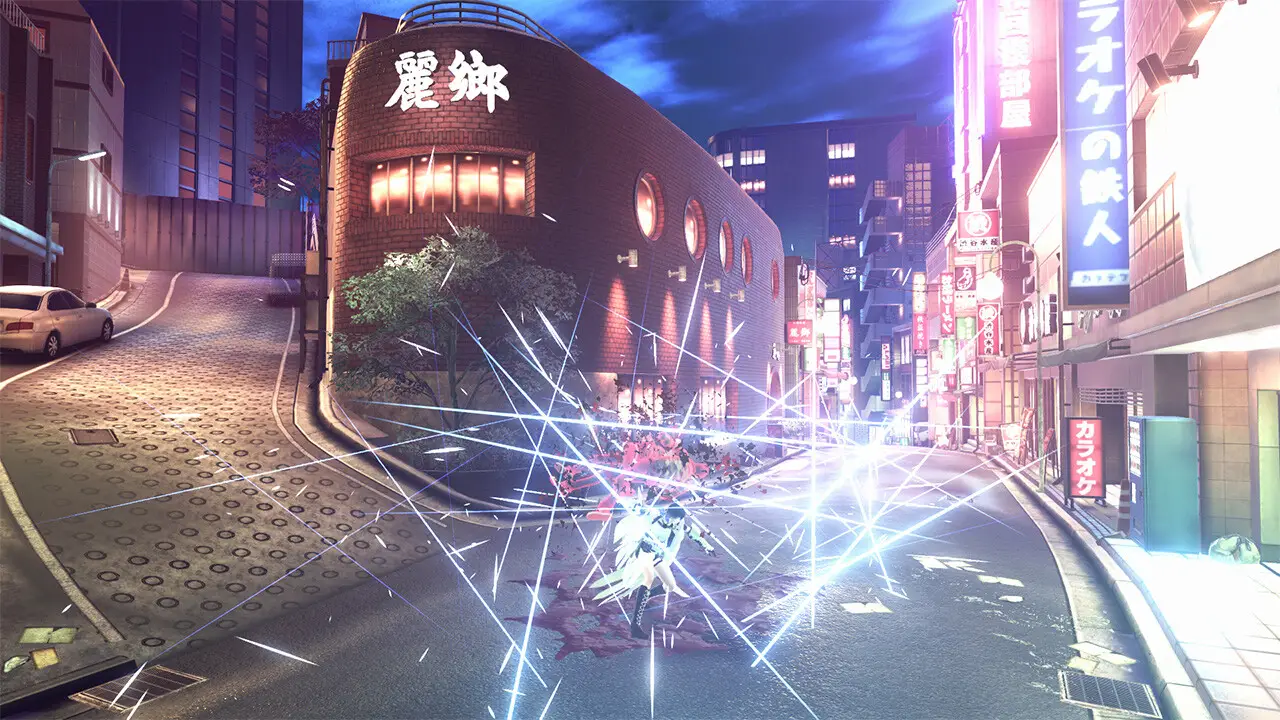
Unlocking Wizarts first requires finding their respective graffiti spot in Shibuya. Though actually unlocking their respective benefits requires grinding side quests. There is a percentage counter at the bottom of the screen called Malice that decreases a singular percent every time a side mission is completed. Each Wizart has a prerequisite Malice percentage in order to become accessible. While the side quests themselves are unintrusive, with each easily being knocked out in a few minutes, the limited amount doled out per chapter made the process of watching Malice slowly tick down grow increasingly grating at each passing percent.
Not that missing out on Wizarts is detrimental to progression, thanks to Reynatis’s threadbare RPG mechanics. Upgrading skills only nets an increase in that action’s damage, and ability Wizarts only increases the efficiency in its passive boon. It is a system that I barely checked on with how quick it is to max Wizart levels. To add insult to injury, the potential to add more ability slots is unlocked around halfway through the game, and additionally gated by grinding materials to fulfill the unlock condition.
As a result, these underbaked mechanics barely add anything to differentiate battles from the first few hours to the last. Choosing not to engage with one of the game’s core RPG systems does little to impact how tough each skirmish is, which is a bummer for an Action RPG. Furthermore, since there are no difficulty options to select, the overall difficulty of the game can be a mixed bag. There were definitely some battles and boss encounters that took me a few tries to pass, but I’d say overall it’s not too hard once the combat clicks. Reynatis spans 33 chapters and should take you around 25-30 hours to complete depending on if you do side activities or skip the cutscenes.

But, the most annoying aspect of fights in Reynatis is the camera. When fighting in open spaces such as the Shibuya crosswalks, or the fields in dungeons, the camera functions adequately. Thankfully these are the most prevalent scenarios where combat takes place. However, the moment a wall gets introduced, or if an encounter takes place under a low ceiling, the camera has no idea what to track as it violently shakes around, the screen swerving around with ever changing close ups of random character limbs and particle effects. Again, more often than not the camera is a non-issue. But these annoyances occurred enough where it became an irritation. And while not as severe, fights having characters zipping around the battlefield makes it easy to get disoriented at which direction to be heading in the same looking dungeons post combat results screen.
Yet despite my numerous issues and gripes I have with Reynatis, the issues I have ultimately serves as a testament to the strengths of Reynatis’s battle system. With combat this stylishly satisfying to pull off, I was more than willing to put up with the repetition, poor dungeons, half baked RPG systems, and inconsistent camera just to experience the exhilarating fights. I was willing to keep doing side quests, not because of the grind for more Wizarts, but because being a group of Kingdom Hearts looking wizards slapping monsters is fun.
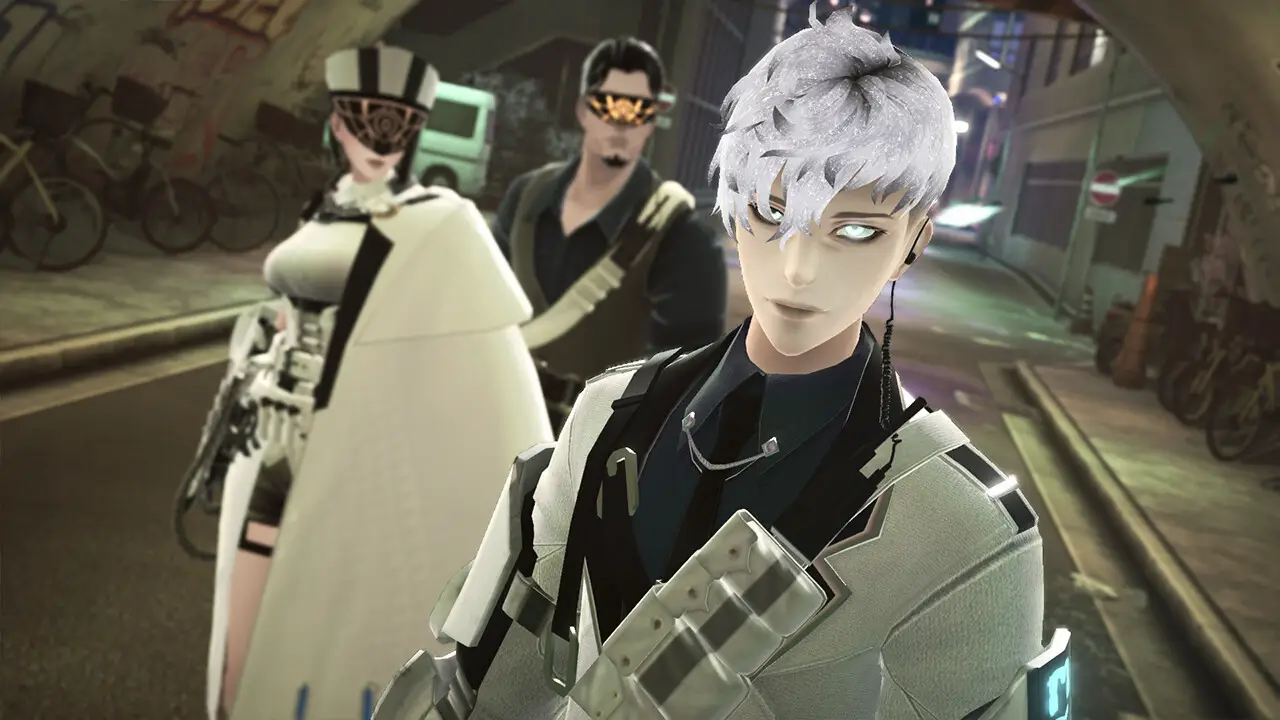
Presentation wise, Reynatis is a mix of highs in the audio department, and lows regarding the visuals. If you’re a JRPG fan, then you’ll for sure know who the legendary Yoko Shimomura is, and yup Reynatis’s soundtrack is composed by none other than yours truly. Shimomura, known for her work on iconic series like Kingdom Hearts and Final Fantasy, brings her considerable talent with over 20 compositions for Reynatis, featuring a diverse mix of grandiose piano, choir, and orchestral crescendos. You’ll definitely get in the zone when listening to all of her creations here. One complaint I do have about the soundtrack however is the lack of overall tracks. Hearing the same few, not to mention similar usage of percussion and piano in Shibuya got grating real fast. The voice acting is pretty solid. Note that there is only Japanese voice acting with English subtitles, which is in line with most of Furyu’s games.
Let’s be real for a moment, the graphics look… pretty rough. The budget for this title for sure didn’t go into the overall visual presentation, as Reynatis was built with the Unity Engine and the graphics look rigid and outdated. Character dialogue and lip syncing is quite stiff and awkward, on top of characters’ clothing and even limbs clipping into each other. But action sequences during combat are thankfully fluid and responsive. It’s clear that this is not a triple A title and ventures more in the double A range, but it is charging a full $60 for the experience.
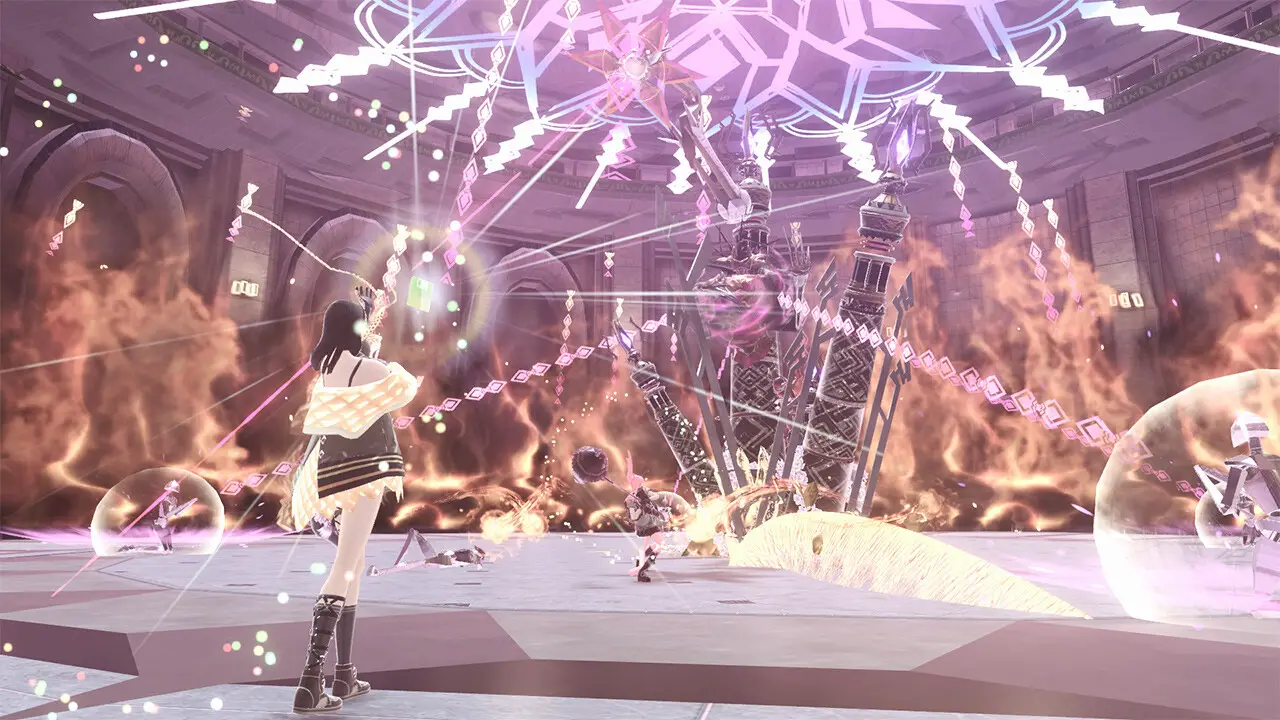
That being said, the actual art direction of Reynatis is superb. On top of what was mentioned before regarding FuRyu’s detailed recreation of Shibuya, the lighting and colors are outstanding. The way the neon lights illuminate each district under the moonlit sky, the different colors harmonizing with each other is akin to a watercolor painting (ignoring how the actual models and textures look straight from a PS2 of course). And as ridiculous as it sounds, I can’t help but hyperfixate on how good the puddles look in this game. It’s such a minute detail, but the reflections from the city lights seem to accurately form the vague shape of what it is reflecting, and the image reflected will shift alongside movement from the camera.
Though Reynatis looks like a game straight out of the early 2000s in the visual department, the technical performance on the PlayStation 5 is flawless. It clocks in at a compact 12.42 GB on the PS5 and takes a mere 3 seconds to load in from the main menu. There are no togglable performance or graphical modes but the game runs at a stable and smooth 60 fps. The default controls on the DualSense controller were a bit awkward but thankfully there is full controller rebinding, which is a huge quality of life win. You even get a built-in photo mode at launch!
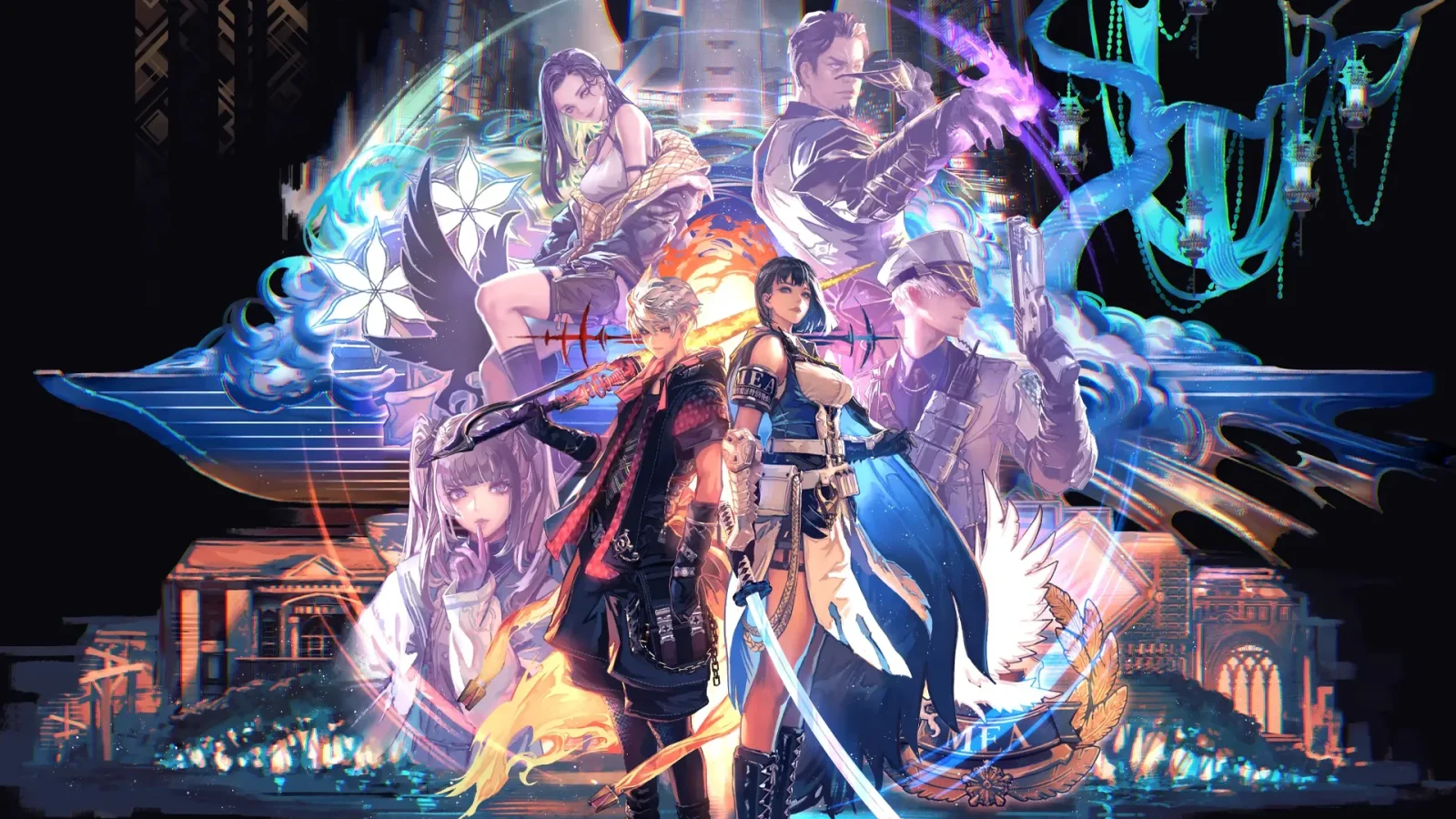
Outside a lower resolution, visually Reynatis on Switch is comparable to its PS5 counterpart. Which means it’s still ugly now with less anti-aliasing. Most of my playtime was in handheld mode, and I was surprised at how rock solid the framerate is during fights. While the Switch version runs at 30 fps, it is stable even during the most hectic of combat encounters. The only instances where slowdown occurs is navigating between districts in Shibuya, or entering and exiting dungeons. Everything chugs as the framerate enters single digits for around five seconds, and for a title that places a heavy emphasis on jumping around different locals, you’re gonna be seeing these slide show moments a lot.
Regrettably, this isn’t even the worst of Reynatis’s performance problems on Nintendo’s handheld. Around the halfway mark I experienced numerous crashes, with the most severe case being five crashes in the span of a few hours. A silver lining is that the game autosaves frequently, which means at worst only a few minutes of progress was lost after each crash, but it’s still no excuse for the sheer amount I had. Thus I can only recommend this title on Switch if you are committed to playing in handheld mode like I was. At least the puddles still look great!
Reynatis
All Right
Reynatis is close to a master at one trade, with its unique and refreshing combat system. But there’s too many other pieces that drag the overall presentation down, especially with its outdated graphics, poor Switch performance, awkward camera angles, and high price tag. However, even through all its minor to glaring flaws, and believe me there are many, it's an adventure I find myself looking fondly back on the things it does well.
Pros
- Refreshing and exhilarating battle system
- Beautiful art direction
- Brilliant soundtrack from Yoko Shimomura
- Fantastic PS5 performance
Cons
- Lackluster visuals, especially in 2024
- Copy pasted dungeon design
- Awkward camera angles
- Poor Switch performance
